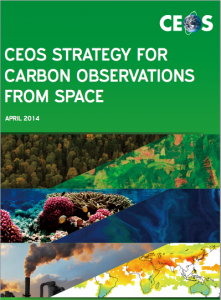In 2010, the Group on Earth Observations (GEO) published a Carbon Observation Strategy for the world. This Strategy called for an Integrated Global Carbon Observing system (IGCO) that would meet the world’s increasingly pressing needs for policy-relevant scientific information about the carbon cycle.
Why Carbon? Well, carbon observations deserve very special attention because ever-increasing carbon-containing compounds in our atmosphere (carbon dioxide and methane) play a central role in driving global climate change. Plus, carbon cycling is fundamental to the entire Earth-system, affecting the Earth’s land, ocean and inland waters, and atmosphere domains. Therefore, satellite observations must address carbon in all of those domains as well as how carbon moves back and forth between them. And it’s not just about collecting carbon data, but making sure meaningful information is produced from that data to advance our scientific understanding and meet societal needs.
Basically, carbon observations are how we, the nations of the world, will monitor the impacts of our actions and natural system changes on the Earth’s climate, so that we can make informed decisions for climate policy development, implementation, and verification.
Since satellite-Earth observations of carbon are critical for effective carbon-monitoring, CEOS, as the primary international forum for coordination of space-based Earth observations, recently published a response to GEO’s Carbon Observation Strategy: the CEOS Strategy for Carbon Observations from Space.
The CEOS Strategy details the adequacy of past, present, and planned satellite measurements of carbon in the land, oceans and inland waters, and atmosphere domains to support GEO. Specifically, it identifies important actions CEOS and its Agencies must take to better coordinate existing and future capabilities, as well as challenges that require additional resources and/or mandates beyond the present capacity of CEOS and its member Agencies.
Download the entire CEOS Carbon Strategy for Carbon Observations from Space to learn more.
